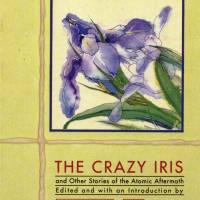Kenzaburo Oe first chronicled the legacy of the nuclear holocausts of Hiroshima and Nagasaki in his collection of 1960s writings, "Hiroshima Notes." Here though, Oe's role is restricted to introducing and editing the short stories of a diverse collection of writers who have written about the effects of the A-bombs.
The Crazy Iris and Other Stories of the Atomic Aftermath, Edited and introduced by Kenzaburo Oe.
208 pages
GROVE PRESS, Memoir.
The headline act is Masuji Ibuse who, in the titular story, crafts a typically subtle and evocative portrait of the final days of the war in his hometown of Fukuyama, just 80 kilometers from Hiroshima.
Beyond Ibuse, this book proves an exceptionally rich collection of stories that includes firsthand accounts of what happened in Hiroshima on Aug. 6, 1945, one written by non-professional writer Katsuzo Oda and another by poet Tamiki Hara, who was so haunted by what he witnessed that he committed suicide in 1951.
Other stories chronicle the long-term devastation of young women living out their lives horribly disfigured or, as relayed in the story "The Empty Can" by Kyoko Hayashi, having pieces of glass — embedded in their skin from the blast — removed from their backs some 30 years later.
A major theme is the lingering fear of developing radiation sickness and of being rendered infertile, and the acute prejudice sometimes afforded to the survivors by outsiders keen to avoid marrying such victims.
First published in 1985, this volume offers multifaceted perspectives on the nightmarish horror that descended on the two Japanese cities.



















With your current subscription plan you can comment on stories. However, before writing your first comment, please create a display name in the Profile section of your subscriber account page.